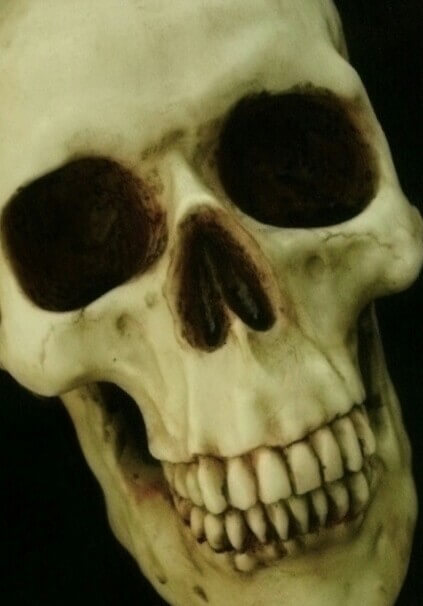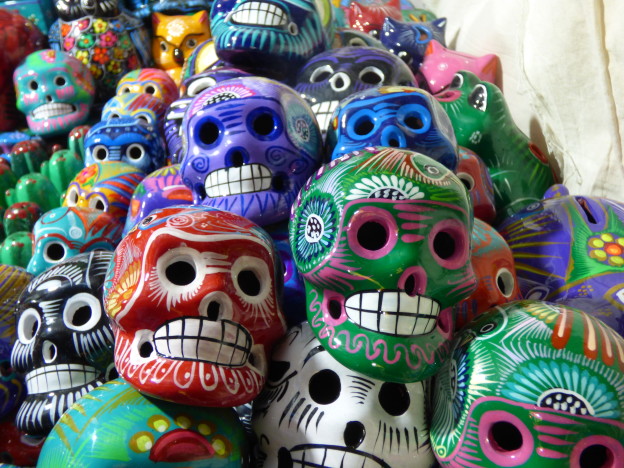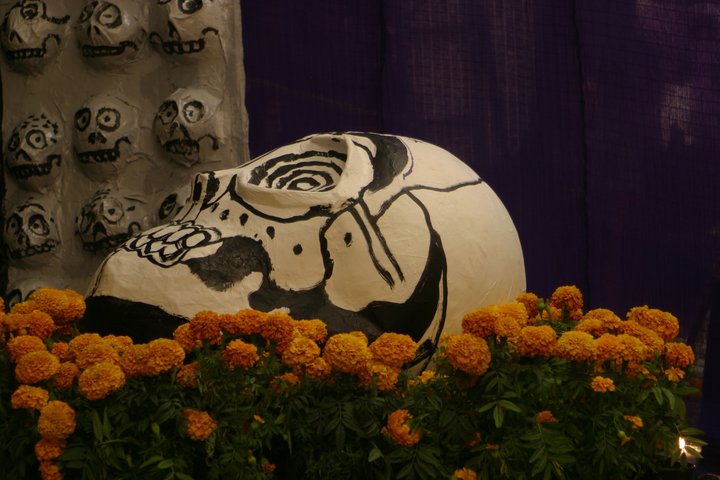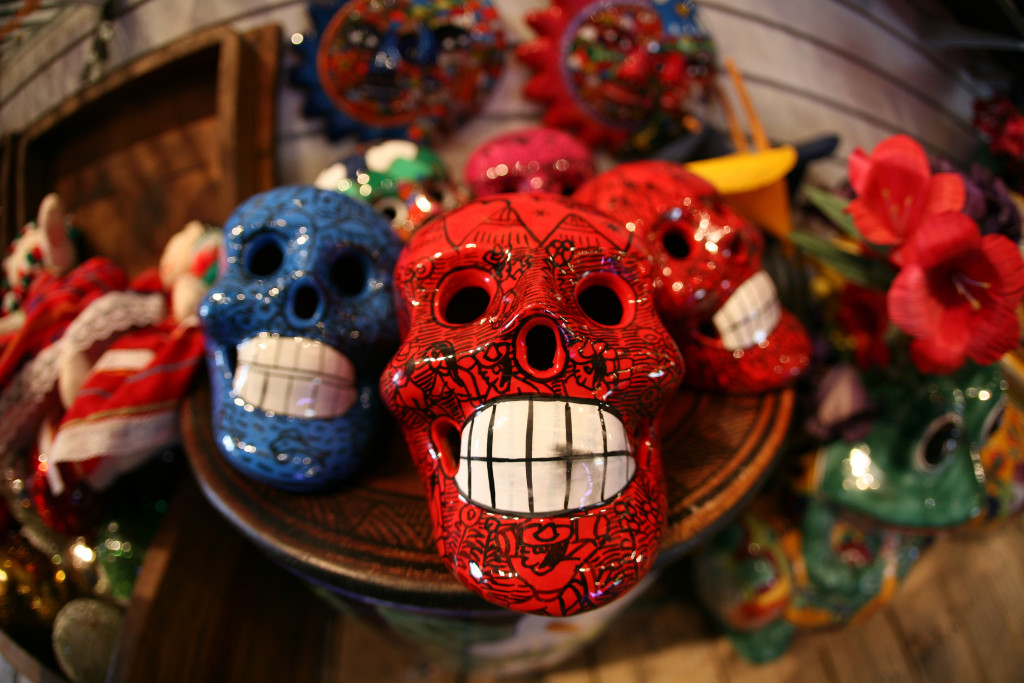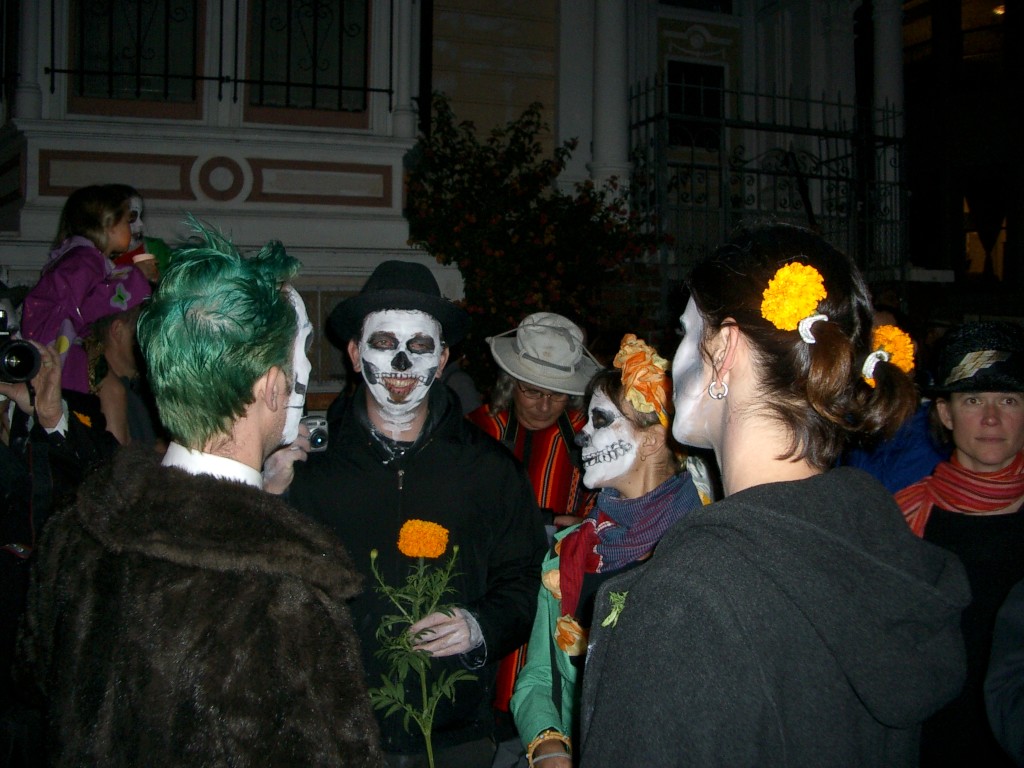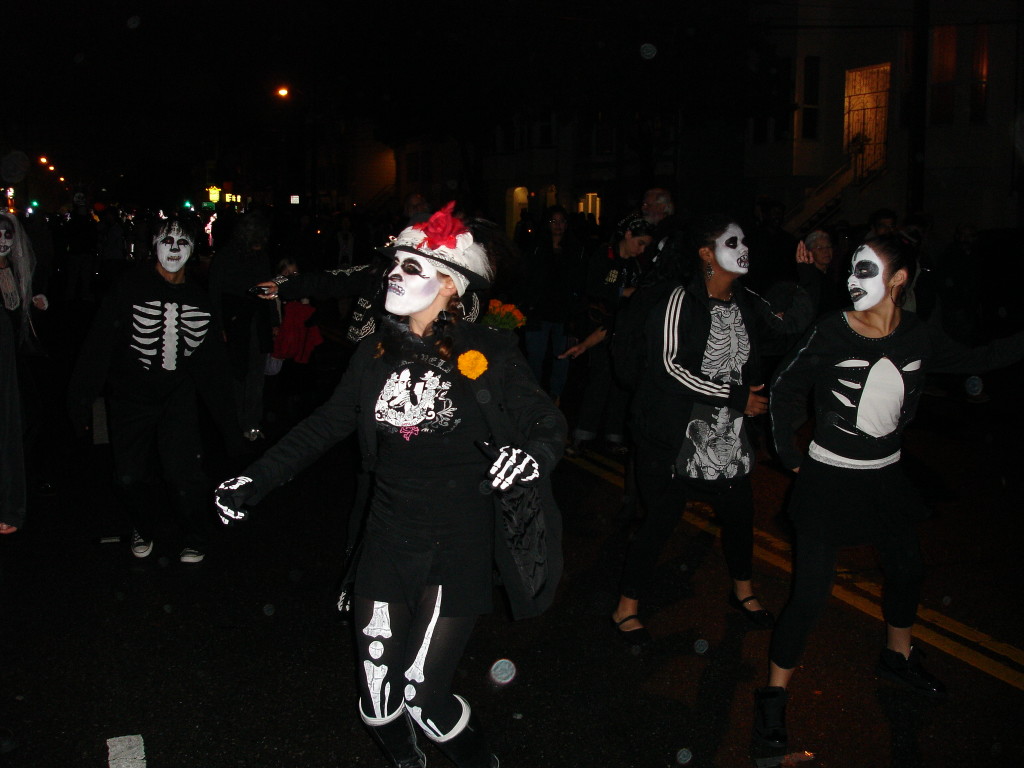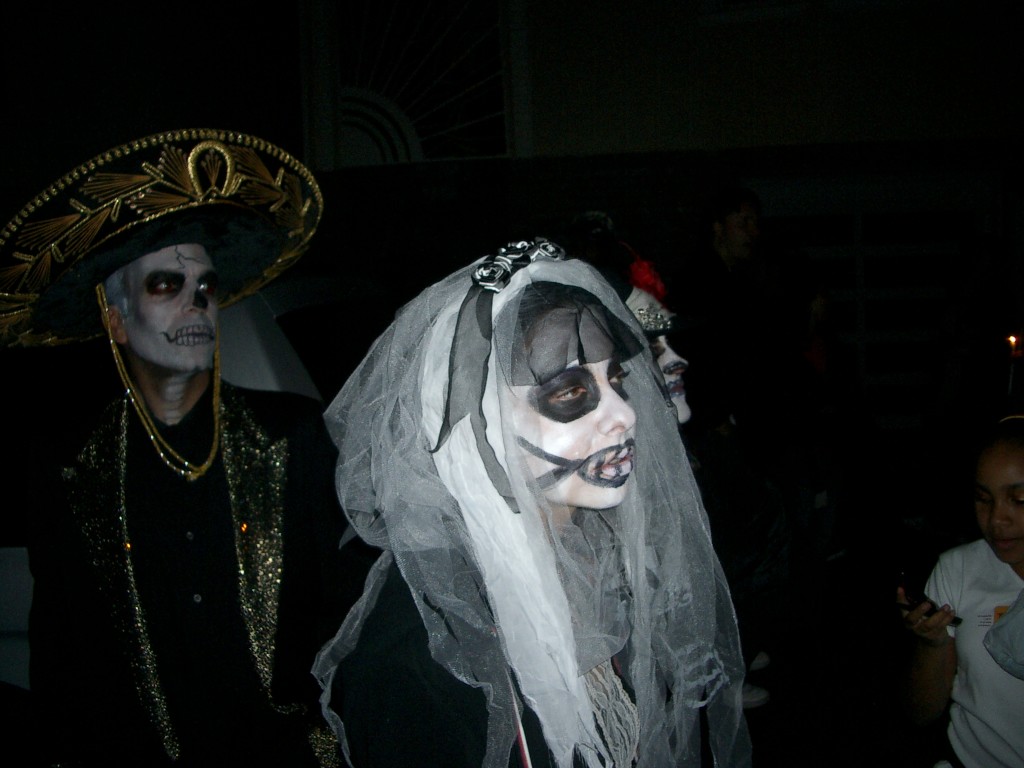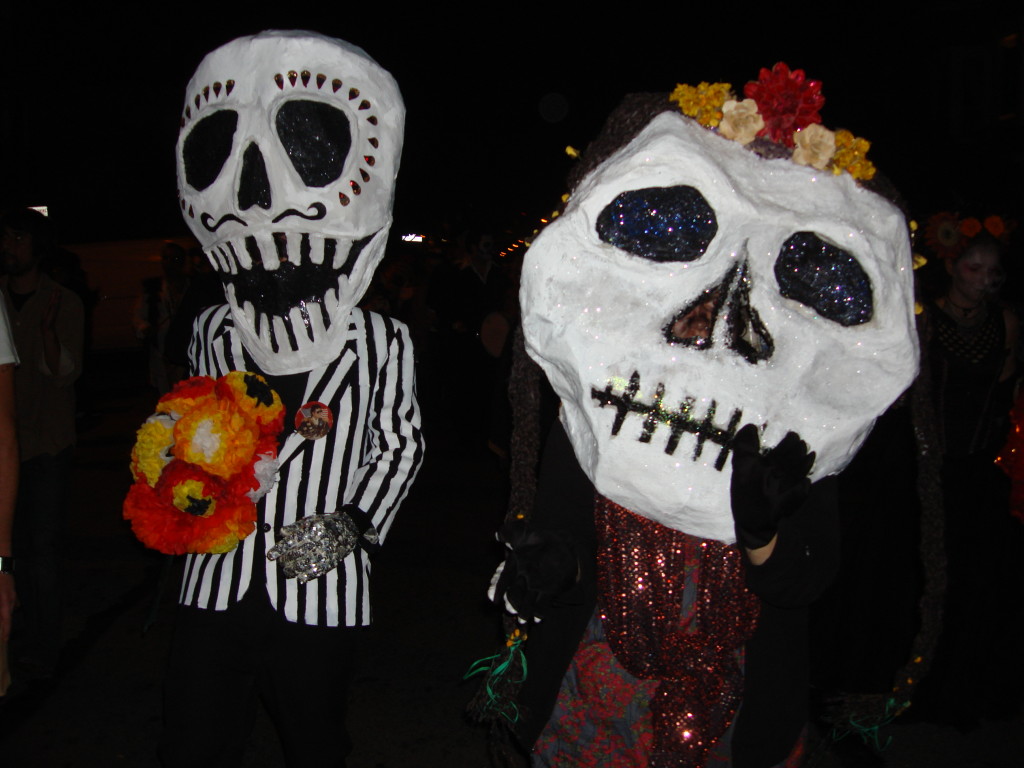Do you want to see some Day of the Dead skulls? We picked a list of a variety of skull pictures (as well as skeletons) that are related to the holiday. We will also talk a little bit about the history as it is observed throughout Mexico and even other cultures around the globe. If you celebrate Day of the Dead and want to wear a costume next year, you may be interested in a sugar skull video tutorial using makeup. The video (placed at the end of the post) can be used for males and females.
In a previous article, we shared links to a few websites that sell Day of the Dead skulls. Although the skulls are often sold primarily as decorations (online and offline), they can also be seen in a variety of other forms such as food, clothing, jewelery and even tattoos. Before we share our many cool pictures, we will first begin with some interesting information on the history of the holiday.
What Is The Day Of The Dead?
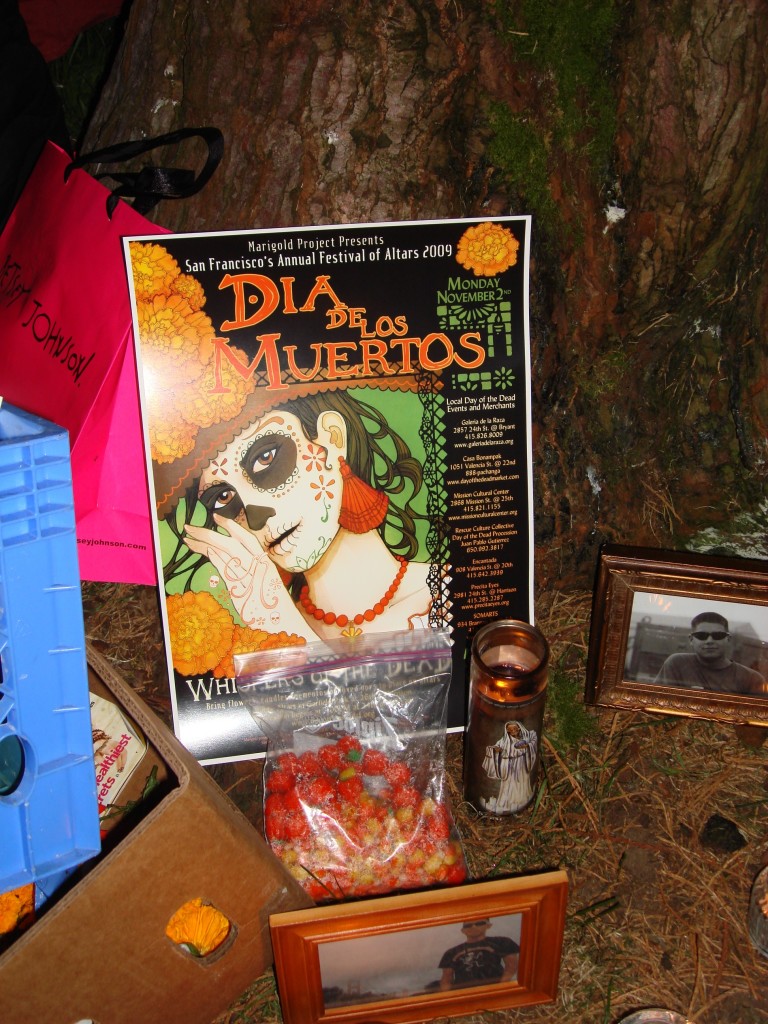
Although the celebration used to take place at the beginning of the summer (prior to Spanish colonization in the 16th century), today it occurs on October 31, November 1 and November 2. It was moved to these dates to coincide with the Roman Catholic triduum festival of Allhallowtide which are All Hallows’ Eve (31 October), Hallowmas (1 November), and All Souls’ Day (2 November).
The big Day of the Dead celebrations that we see today, were developed from ancient traditions among its pre-Columbian cultures. It is believed that rituals celebrating the death of ancestors have been taking place for nearly 3,000 years. The festival that was developed into modern celebrations fell into the 9th month of the Aztec calendar (in August). The celebrations went on for a month, and were dedicated to the goddess known as the “Lady of the Dead”. However, in the late 20th century, the purpose of practices developed (for most Mexican regions) to honor dead children and adults.
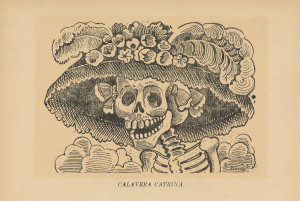
La Calavera Catrina: The icon of the Mexican Día de los Muertos
October 31: On Day 1 of the holiday (All Hallows Eve), children will make a children’s altar. This is done because it is said to invite the spirits of dead children (the angelitos) to come back for a visit.
November 1: On Day 2 (All Saints Day), it is believed that adult spirits will come and visit.
Referred to as Día de los Inocentes (“Day of the Innocents”) and Día de los Angelitos (“Day of the Little Angels”)
November 2: On Day 3 (All Souls Day), families will gather and take a trip to the cemetery. They will decorate the graves and tombs of their deceased relatives. They will also build private altars (called ofrendas) to place their loved ones pictures, memorabilia and their favorite foods and beverages.
Referred to as Día de los Muertos or Día de los Difuntos (“Day of the Dead”)
Although the Day of the Dead celebration only comes around once a year, people will plan ahead for it throughout the year. They will often spend a lot of money on gathering goods that will be offered to their dead relatives. They believe that the offerings will help make their spirits happy. Happy spirits are believed to provide protection, good luck and even wisdom to their families.
Skull Food

“Amaranth Skull” by Thelmadatter is licensed under CC BY-SA 3.0
A calavera is a depiction of a human skull. They are made from either sugar or clay. In addition to being used for the Day of the Dead celebration, calavera are also used during the Roman Catholic holiday All Souls Day. There are many traditions that are connected to the Day of the Dead holiday. Families will honor the deceased by using sugar skulls (or a chocolate variation), clay skulls and other foods that look like skulls. We will now provide a little more detail on sugar and clay skulls.
Sugar Skulls
Sugar skulls are usually made from sugar cane and are occasionally flavored with vanilla. They are decorated with lines of vegetable dye in a variety of colors. The more common colors are blue, green, yellow and red. In addition to edible sugar calaveras, there are other variations that are made out of chocolate. Typically written on the skull foreheads are the names of living people.
The calaveras may purchased as gifts (for both the living and the dead). Although they are edible, they are often just kept for a few days (during the duration of the celebration) and then eventually thrown out. The enormous sized sugar skulls are made from molds that are around fifty years old.
Clay Skulls
Clay skulls are another variation of calaveras. They are decorated toys (often with beaded eyes of contrasting colors) that resemble the shape of a human skull. Although they are typically painted with a metallic silver color, they are also seen painted with other colors such as white and red.
Calavera Sugar Skulls
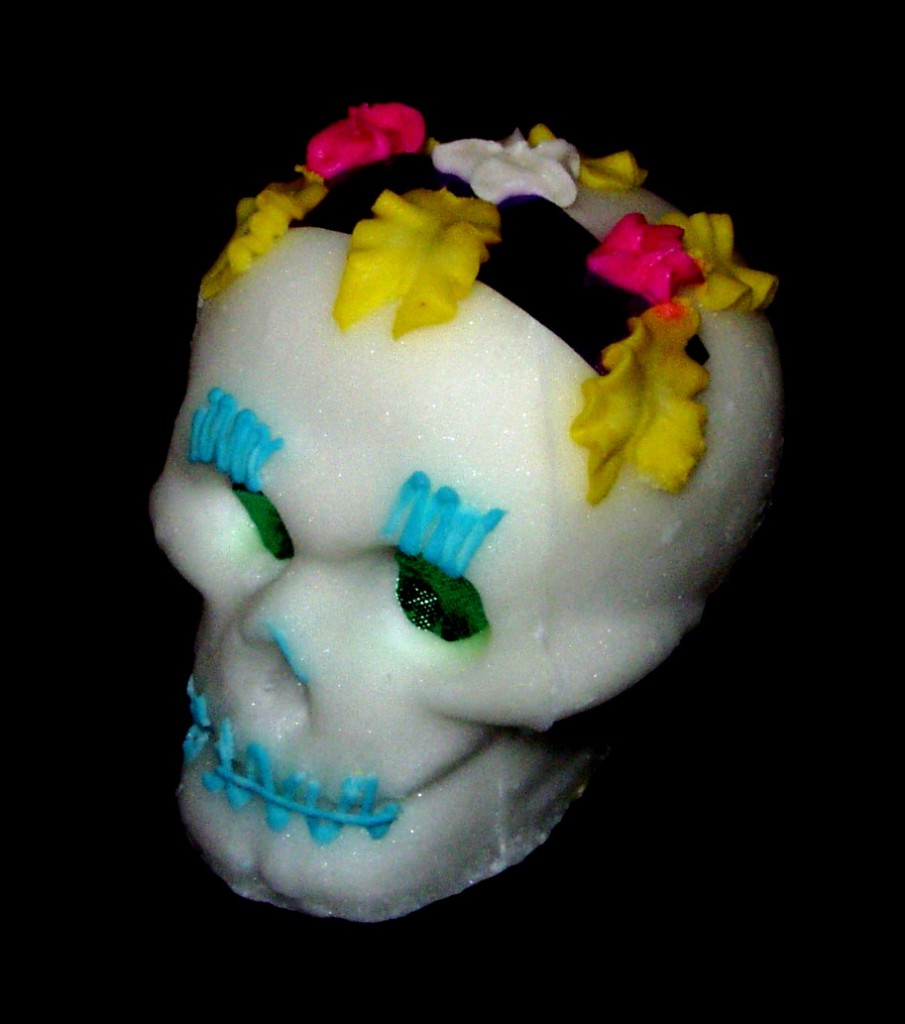
“Calavera” by Nathaniel C. Sheetz is licensed under CC BY-SA 3.0
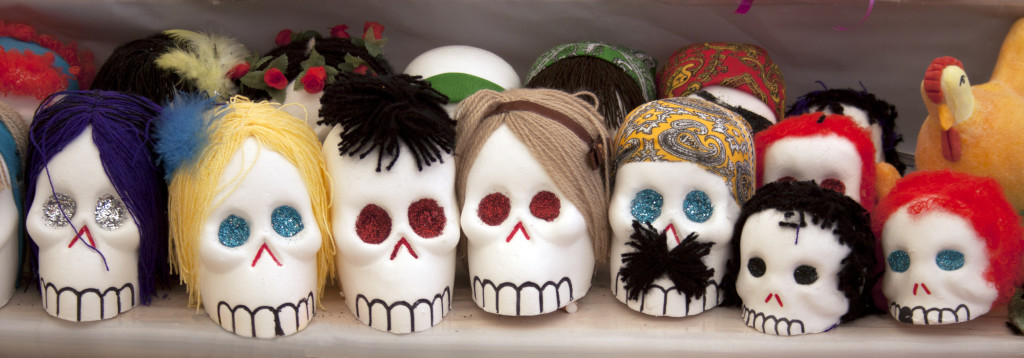
“Alfeniques of day of the dead” by Tomascastelazo is licensed under CC BY-SA 3.0

“Day of the Dead Coyoacan 2014 – 79” by Cristina Zapata Pérez is licensed under CC BY-SA 4.0
The Chocolate Variation

“Norma Patiño Sánchez” by Norma Ps is licensed under CC BY-SA 4.0
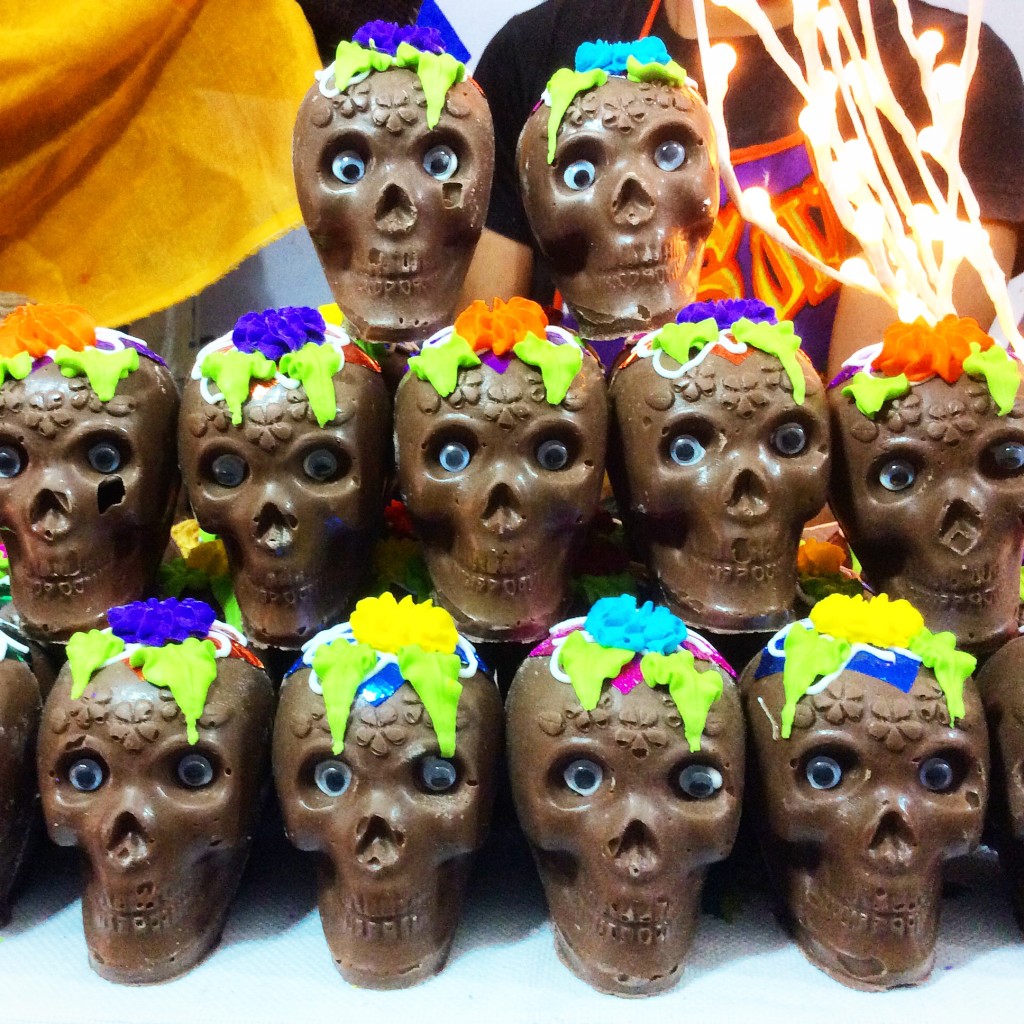
“Day of the Dead Coyoacan 2014 – 69” by Cristina Zapata Pérez is licensed under CC BY-SA 4.0
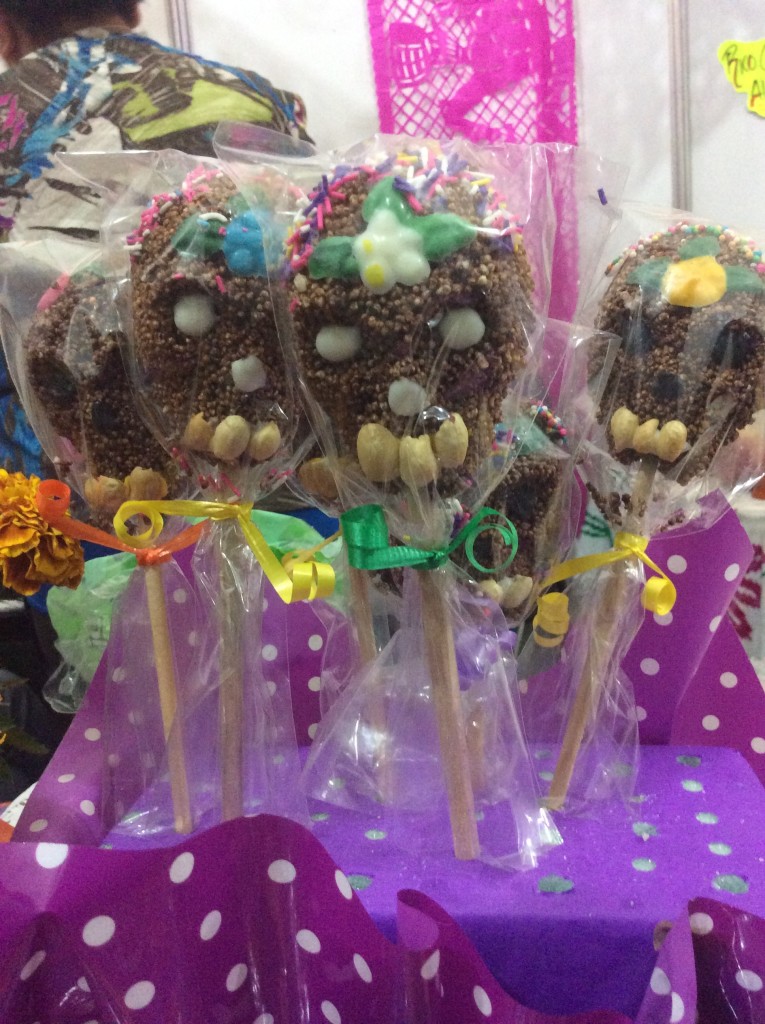
“Day of the Dead Coyoacan 2014 – 99” by Cristina Zapata Pérez is licensed under CC BY-SA 4.0
Day Of The Dead Skull Cake
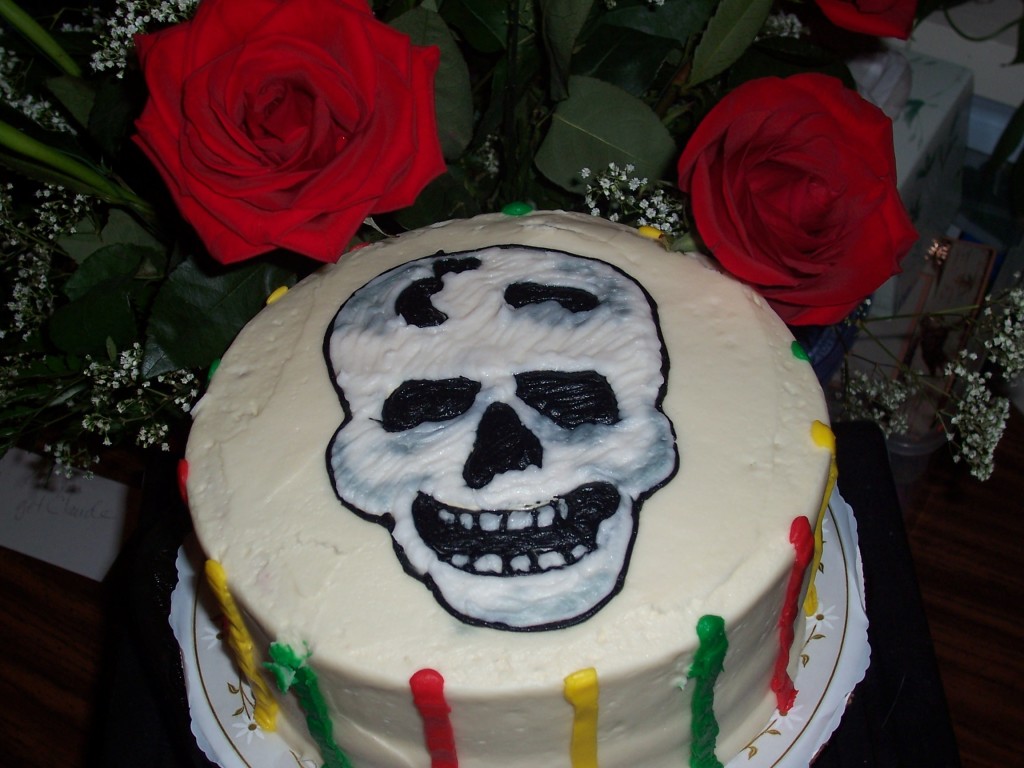
“Day Of The Dead Cake” by Rochelle Hartman is licensed under CC BY 2.0
Decorative Skulls And Skeletons (non-edible)
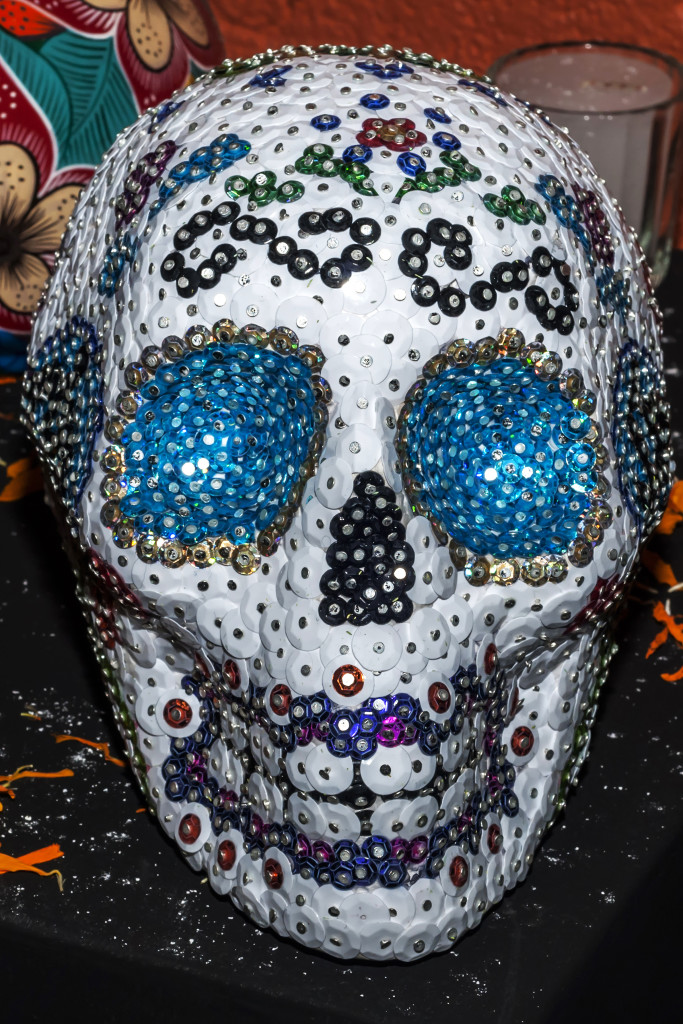
“Calaveras002” by Dega86 is licensed under CC BY-SA 4.0
The skull is a very common symbol for the Day of the Dead holiday. A commonly used decoration for the three-day celebration is called a calaca. A calaca is a figure of usually a human skull or a skeleton. They are decorated with design patterns and colors. Many people show their respects to the dead by not only decorating with a variety of calacas, but also by wearing giant skull masks.

“Calavera de el dia de muertos en el TEC CCM” by Ricardo Stacpoole is licensed under CC BY-SA 3.0
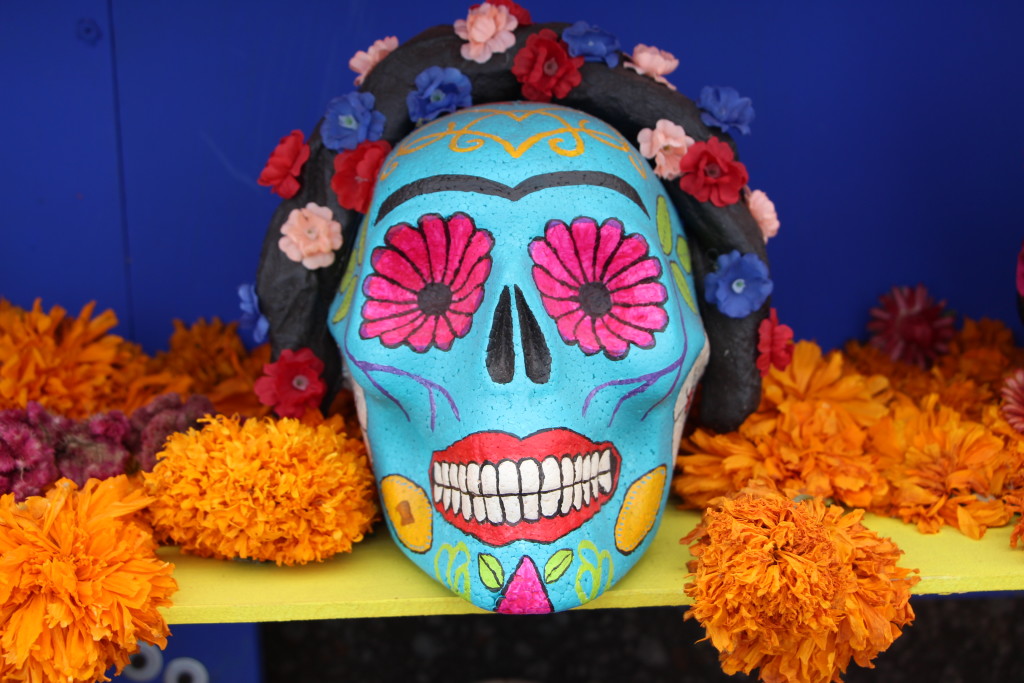
“Megaofrenda 2014 161” by Elenats.93 is licensed under CC BY-SA 4.0
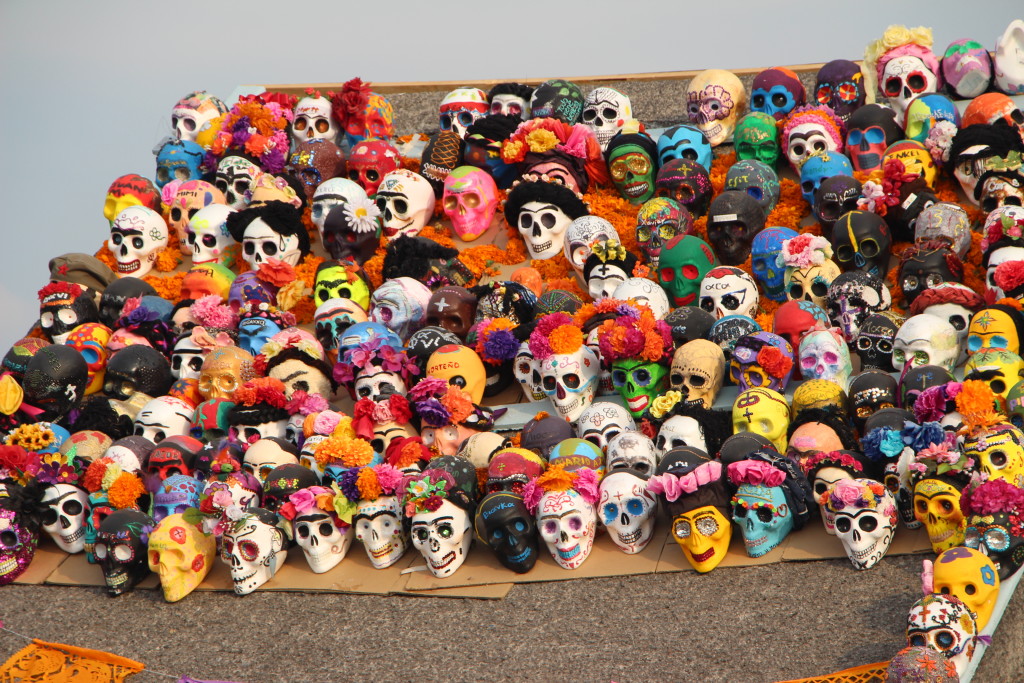
“Megaofrenda 2014 11” by Elenats.93 is licensed under CC BY-SA 4.0
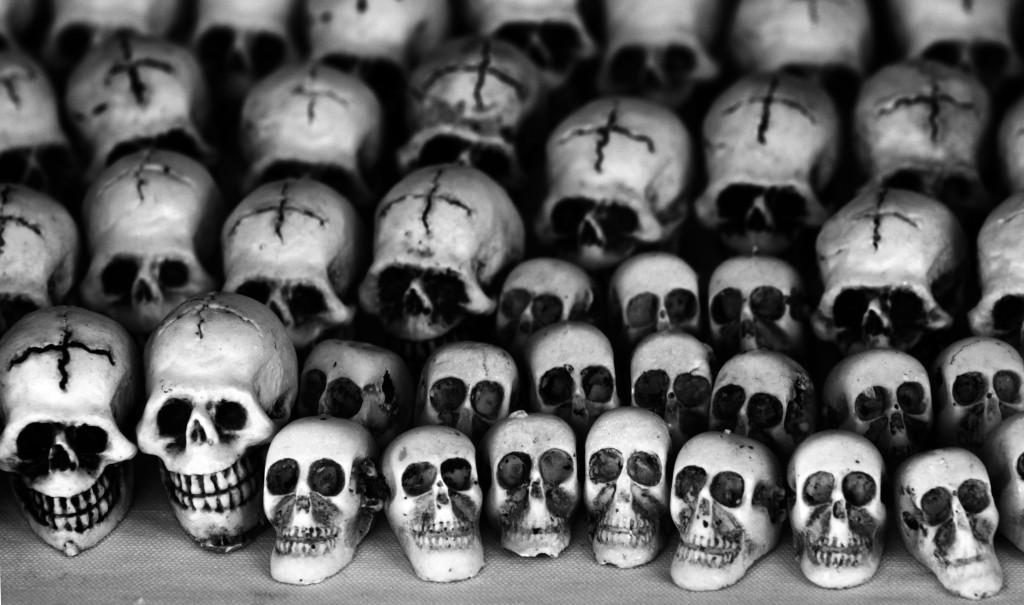
“Calaveras skulls” by Tomas Castelazo is licensed under CC BY-SA 3.0
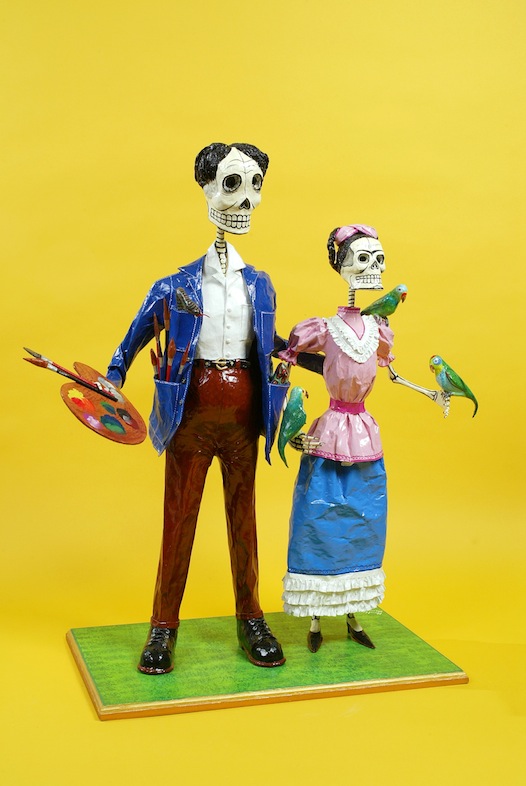
“Childrens Museum of Indianapolis – Kahlo Rivera Day of the Dead” by Wendy Kaveney is licensed under CC BY-SA 3.0
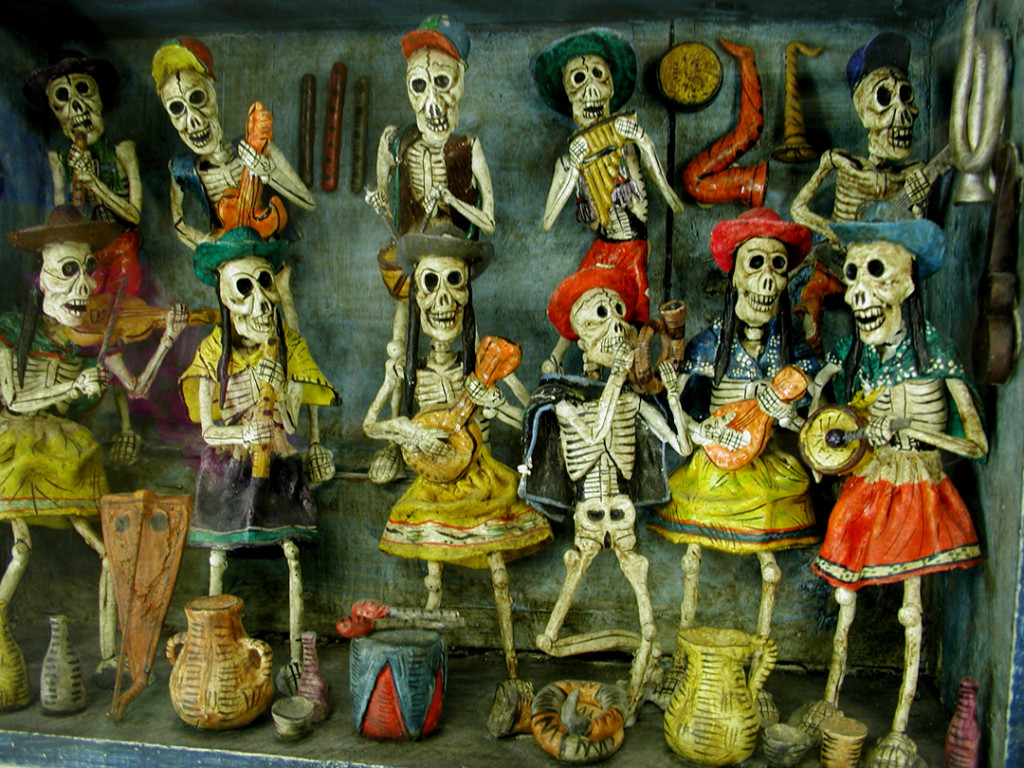
“Day of the Dead Display(right front table detail)” by carmichaellibrary is licensed under CC BY 2.0

“The Childrens Museum of Indianapolis – Skull mask” by Museum Staff is licensed under CC BY-SA 3.0
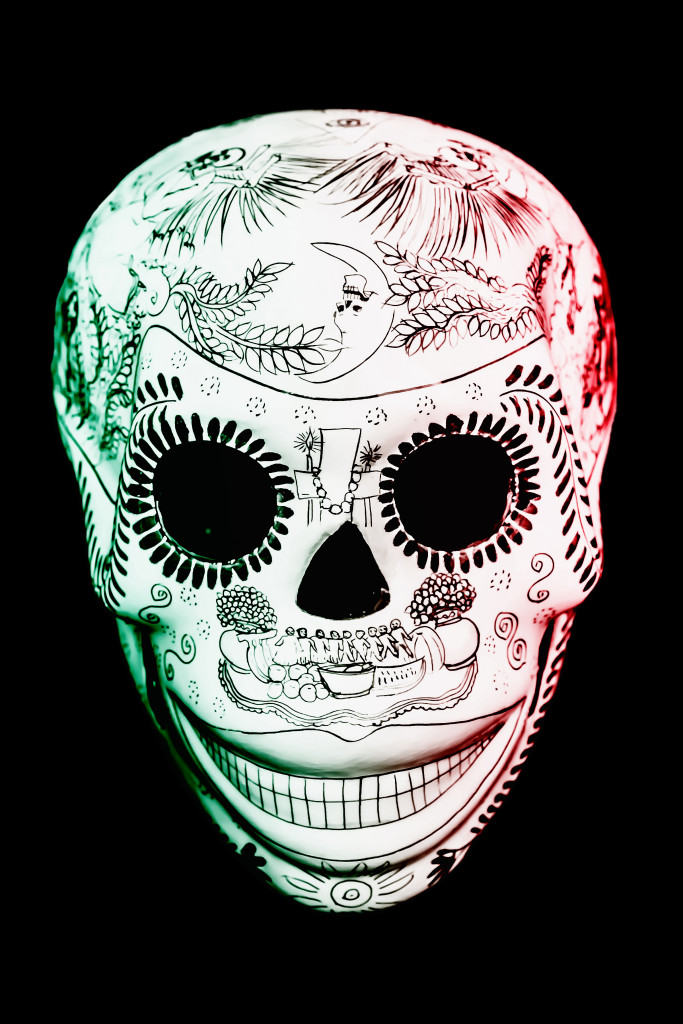
“CalaveraTRI” by Dega86 is licensed under CC BY-SA 4.0
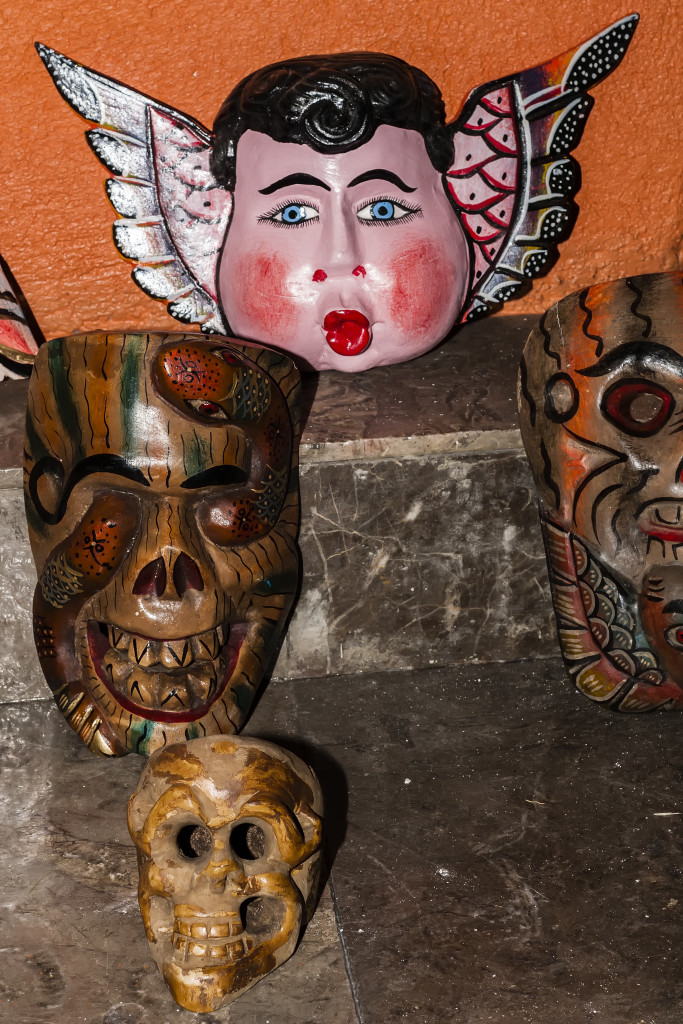
“Calaveras007” by Dega86 is licensed under CC BY-SA 4.0
Skull Costumes
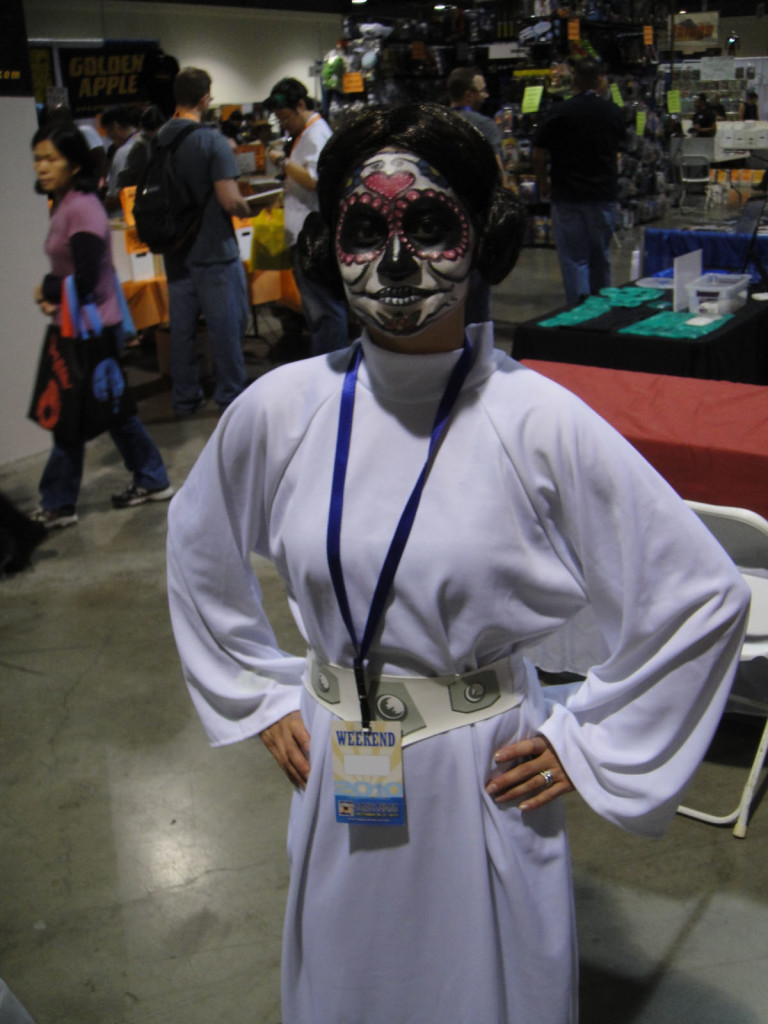
“Day of the Dead Princess Leia” by The Conmunity – Pop Culture Geek is licensed under CC BY 2.0
Although the Day of the Dead celebration is particularly celebrated throughout Mexico, it is also observed in other places around the world (although not all are entirely identical to traditional celebrations). The Philippines, Austria, Spain, France, Brazil and the United States are just some.
American communities with Mexican residents (such as Texas, Arizona and California) will have celebrations that are similar to the actual holiday occurring annually in Mexico. Since 1990, the All Souls Procession has taken place every year in Tucson, Arizona. This particular event will combine the elements of the traditional celebrations with the traditions seen in pagan harvest festivals.
Below are four images that were taken from the November 2nd Day of the Dead Procession and Altars event. The celebration took place in the Mission District, San Francisco, California. It has been celebrated every year in San Francisco since 1988. Many people will get together and dress up in costumes (commonly black and white clothing). They will often paint their faces to emulate skulls.
Day of the Dead Procession In San Francisco
Calavera Tattoos
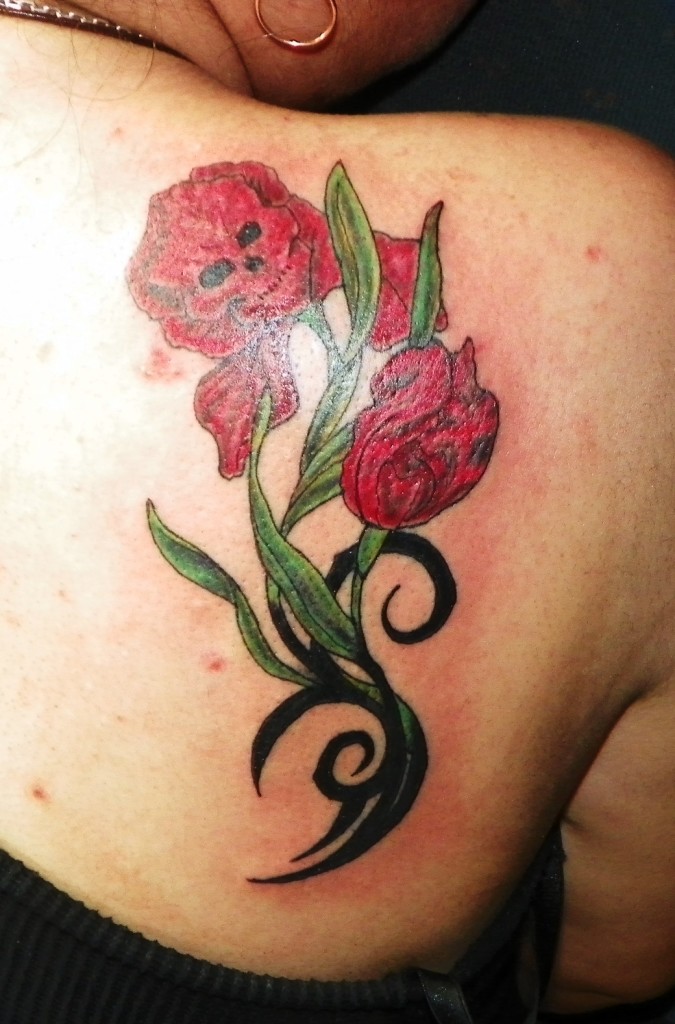
“Calavera” by Tattoodelmono is licensed under CC BY-SA 3.0
To honor the memory of deceased loved ones, people will often get a sugar skull tattoo. Smaller sized skulls are typically created to represent children. The larger skulls will represent adults. The tattoos are usually very detailed and colorful. When the skull actually represents a specific person, the name of the deceased person is placed on the forehead part (similar to sugar skulls except the names are of people who are alive) of the tattoo. Although the remainder of the sugar skull tattoo is embellished, the only writing is what is on the forehead. There are a variety of meanings behind a sugar skull tattoo. The tattoo can mean death, remembrance, return or a symbol of spirituality.
Conclusion
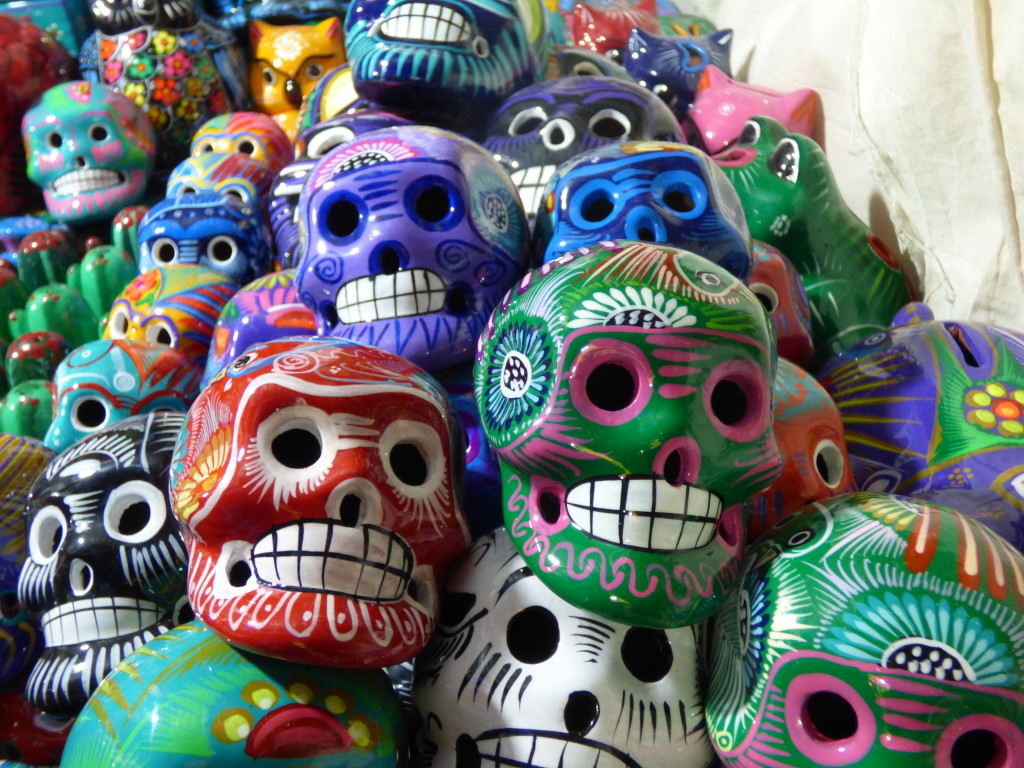
“Festival de las Calaveras, Aguascalientes 2014 64” by Luisalvaz is licensed under CC BY-SA 4.0
If you were unaware of the actual meaning behind Day of the Dead before reading this post, you can now certainly see how serious many people take this holiday. They will spend a good amount of time and money preparing for the gathering to remember their deceased loved ones. For years to come, people will continue to create, wear, consume and exhibit their Day of the Dead skulls.
